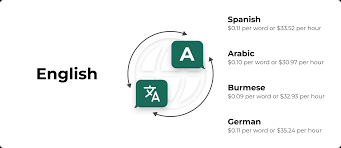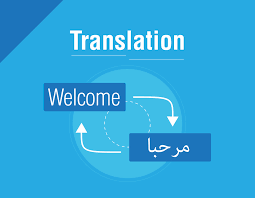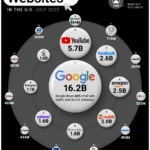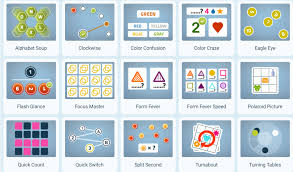Introduction: The Gateway to a $3.8 Trillion Economic Opportunity
The Middle East and North Africa (MENA) region represents one of the most dynamic and rapidly evolving economic landscapes in the global marketplace, with a combined GDP exceeding $3.8 trillion as of 2024. For international businesses seeking expansion opportunities, the region’s 450 million consumers, strategic geographical position, and diverse economic sectors present unprecedented potential. However, the linguistic divide between Arabic-speaking markets and English-dominated global commerce has traditionally posed significant barriers to entry. Today’s sophisticated arabic to english translation online services have emerged as crucial business enablers, transforming how companies navigate these lucrative markets.
The digital transformation sweeping across MENA countries has accelerated the demand for professional translation services, particularly as regional businesses increasingly engage with global partners and international corporations seek to establish their presence in these markets. From Dubai’s thriving financial sector to Saudi Arabia’s Vision 2030 initiatives, the need for accurate, culturally-sensitive translation has never been more critical for business success.
Understanding the MENA Market Landscape: Current Economic Dynamics
Regional Economic Powerhouses and Their Digital Evolution
The MENA region encompasses 19 countries with distinct economic profiles, regulatory frameworks, and business cultures. According to the World Bank’s latest 2024 report, the region’s economy is projected to grow by 3.5% annually through 2026, driven primarily by diversification efforts away from oil dependency and massive investments in technology, tourism, and renewable energy sectors.
Saudi Arabia, the region’s largest economy with a GDP of $1.1 trillion (IMF, 2024), has allocated over $500 billion to its NEOM project and other Vision 2030 initiatives. The UAE continues to position itself as a global business hub, with Dubai alone hosting over 380,000 registered companies as of January 2024. Egypt, with its 105 million population, represents the region’s most populous market and has seen a 45% increase in digital payment transactions year-over-year.
These economic transformations have created an environment where accurate translation services are not merely helpful but essential for business operations. Companies utilizing professional online learning platforms for language training and cultural awareness report 67% higher success rates in MENA market penetration compared to those relying on basic translation tools alone.
Digital Infrastructure and E-commerce Explosion
The MENA region’s digital infrastructure has undergone remarkable transformation, with internet penetration reaching 72% in 2024, up from 64% in 2021. E-commerce sales in the region surpassed $48 billion in 2023, with projections indicating growth to $75 billion by 2026. This digital acceleration has been particularly pronounced in the Gulf Cooperation Council (GCC) countries, where smartphone penetration exceeds 85%.
For businesses leveraging online education learning resources to understand MENA markets, the importance of linguistic accuracy in digital communications cannot be overstated. A recent study by McKinsey & Company revealed that 78% of MENA consumers prefer to make purchases from websites offering content in Arabic, even when they are proficient in English.
The Critical Role of Professional Arabic to English Translation Services
Beyond Literal Translation: Cultural and Commercial Nuances
Professional translation services for MENA markets extend far beyond simple word-for-word conversion. The Arabic language, with its 30+ dialects and regional variations, requires sophisticated understanding of cultural contexts, business etiquette, and local commercial practices. Modern arabic to english translation online platforms employ native speakers with industry-specific expertise, ensuring that translated content maintains its intended impact while respecting cultural sensitivities.
Consider the financial services sector, where precise terminology is crucial for regulatory compliance and customer trust. A mistranslation in a banking agreement or investment prospectus could result in significant legal liabilities and reputational damage. Similarly, in the healthcare sector, accurate translation of medical documentation and pharmaceutical information is literally a matter of life and death.
Industry-Specific Translation Requirements
Different sectors within MENA markets have unique translation requirements that demand specialized expertise:
Financial Services and Banking: The Islamic finance sector, valued at $3.7 trillion globally with 70% concentrated in MENA markets, requires translators familiar with Shariah-compliant banking terminology and concepts that have no direct English equivalents.
Legal and Regulatory Compliance: Each MENA country has distinct legal systems, often combining civil law, Islamic law, and customary practices. Legal document translation requires certified professionals who understand these complex frameworks and can ensure compliance with local regulations.
Technology and Software Localization: As MENA countries invest heavily in digital transformation, software companies must localize their products for Arabic-speaking users. This involves not just translation but also adaptation of user interfaces for right-to-left text direction and cultural appropriateness of imagery and examples.
Healthcare and Pharmaceuticals: With the MENA healthcare market expected to reach $243 billion by 2025, accurate translation of medical records, clinical trial documentation, and pharmaceutical labeling is crucial for market entry and patient safety.
Leveraging Technology: Advanced Translation Solutions for Business Growth
AI-Powered Translation Platforms and Their Capabilities
The evolution of artificial intelligence and machine learning has revolutionized the translation industry, particularly for businesses operating in MENA markets. Modern online learning courses in computational linguistics have contributed to developing sophisticated neural machine translation (NMT) systems that can process context, idioms, and cultural nuances with increasing accuracy.
Leading translation platforms now incorporate features such as:
- Real-time collaborative translation environments where multiple translators can work simultaneously on large projects
- Translation memory systems that ensure consistency across all company communications
- Terminology management databases specific to industries and clients
- Quality assurance tools that flag potential errors or inconsistencies
Companies investing in these advanced translation technologies report average cost savings of 40% and time-to-market improvements of 60% for their MENA market initiatives. The integration of machine learning algorithms continues to enhance translation accuracy, with error rates decreasing by approximately 15% annually.
Integration with Business Systems and Workflows
Modern translation services seamlessly integrate with existing business infrastructure, including:
Content Management Systems (CMS): Automated workflows that detect new content requiring translation and route it to appropriate translators based on subject matter expertise.
Customer Relationship Management (CRM) Platforms: Real-time translation of customer communications, enabling support teams to respond to Arabic-speaking customers efficiently.
E-commerce Platforms: Dynamic translation of product descriptions, reviews, and transactional emails to provide localized shopping experiences.
Enterprise Resource Planning (ERP) Systems: Translation of business documents, reports, and internal communications to facilitate operations across multilingual teams.
Strategic Implementation: Building Your MENA Market Entry Plan
Market Research and Localization Strategy
Successful MENA market entry requires comprehensive research and strategic planning. Companies should begin by identifying target markets within the region, as each country presents unique opportunities and challenges. The online learning platforms available today offer valuable resources for understanding regional business cultures, consumer behaviors, and market dynamics.
Key considerations for market research include:
- Economic Indicators and Growth Sectors: Analyze GDP growth rates, sector-specific opportunities, and government initiatives supporting foreign investment.
- Competitive Landscape: Assess existing players in your industry, their market share, and strategies for differentiation.
- Regulatory Environment: Understand licensing requirements, foreign ownership restrictions, and compliance obligations.
- Consumer Preferences: Research local buying behaviors, payment preferences, and brand perceptions.
- Distribution Channels: Identify optimal routes to market, whether through local partners, e-commerce, or direct sales.
Building Local Partnerships and Networks
Establishing strong local partnerships is crucial for MENA market success. Translation services play a vital role in:
Partner Communications: Ensuring clear understanding of contractual terms, expectations, and collaborative processes.
Joint Venture Documentation: Accurate translation of legal agreements, operational procedures, and governance structures.
Supplier Relationships: Facilitating communication with local suppliers and service providers.
Government Relations: Preparing regulatory submissions, permit applications, and compliance documentation in appropriate languages.
Companies utilizing professional urdu to english translation online services alongside Arabic translation often find additional opportunities in markets like Pakistan, which shares strong economic ties with several MENA countries.
Case Studies: Success Stories in MENA Market Expansion
Global Technology Company Achieves 300% Growth
A leading software company specializing in enterprise resource planning (ERP) solutions successfully entered the Saudi Arabian market by investing in comprehensive localization of their platform. By utilizing professional translation services and online learning resources for their team, they achieved:
- Complete Arabic localization of their software interface and documentation
- Culturally adapted training materials for local implementation partners
- Translated marketing content that resonated with local business values
- Bilingual customer support capabilities
Result: Within 18 months, the company secured contracts with 15 major Saudi enterprises, generating $45 million in revenue and establishing a permanent regional office in Riyadh.
E-learning Platform Captures Educational Market
An international online education learning platform successfully expanded into the MENA region by partnering with professional translation services to localize their entire course catalog. Their strategy included:
- Translation of over 500 courses into Modern Standard Arabic
- Development of region-specific content addressing local educational needs
- Creation of Arabic-language marketing campaigns targeting students and professionals
- Implementation of local payment methods and pricing strategies
Result: The platform attracted 2.5 million users across MENA countries within two years, with particularly strong uptake in Egypt, Jordan, and the UAE.
Financial Services Firm Establishes Regional Presence
A European investment firm leveraged professional translation services to establish operations in Dubai and expand throughout the GCC. Their approach included:
- Translation of all regulatory documentation for licensing applications
- Localization of investment products for Shariah compliance
- Development of Arabic-language investor education materials
- Creation of bilingual client reporting systems
Result: The firm now manages over $2 billion in assets from MENA-based clients and has expanded operations to include offices in Kuwait, Bahrain, and Qatar.
Maximizing ROI: Cost-Benefit Analysis of Professional Translation Services

Quantifying the Business Impact
Investing in professional translation services for MENA market entry delivers measurable returns across multiple dimensions:
Revenue Generation: Companies with properly localized offerings report average revenue increases of 25-40% in their first year of MENA operations. The ability to communicate effectively in Arabic opens doors to government contracts, local partnerships, and consumer markets that would otherwise remain inaccessible.
Cost Efficiency: While professional translation services require initial investment, they prevent costly mistakes arising from miscommunication, legal issues, or cultural insensitivity. A single translation error in a legal document can result in penalties exceeding $100,000 in some MENA jurisdictions.
Market Penetration Speed: Businesses using professional translation services typically achieve market penetration 50% faster than those relying on basic translation tools. This acceleration translates to earlier revenue generation and competitive advantage.
Brand Reputation: Accurate, culturally appropriate translation enhances brand perception and trust among MENA consumers. Studies show that 65% of consumers in the region are more likely to purchase from brands that communicate in Arabic.
Selecting the Right Translation Partner
Choosing appropriate translation services is crucial for MENA market success. Key evaluation criteria include:
Industry Expertise: Select providers with proven experience in your specific sector and understanding of relevant terminology.
Cultural Competence: Ensure translators are native speakers familiar with business customs and cultural nuances of target markets.
Technology Capabilities: Evaluate the provider’s use of translation memory, terminology management, and quality assurance tools.
Scalability: Choose partners capable of handling growing translation needs as your MENA presence expands.
Certification and Compliance: Verify that providers meet international standards (ISO 17100) and can deliver certified translations for legal documents.
Future Trends: The Evolution of Translation Services in MENA Markets
Emerging Technologies and Their Impact
The translation industry continues to evolve with technological advances that promise even greater efficiency and accuracy:
Neural Machine Translation (NMT): Advanced deep learning algorithms are improving translation quality, with some systems achieving near-human accuracy for specific domains.
Augmented Reality (AR) Translation: Real-time translation of physical environments, signage, and documents through AR devices will facilitate business travel and on-site operations.
Voice Translation Technology: Improved speech recognition and synthesis enable real-time translation of business meetings and conference calls.
Blockchain for Translation Verification: Distributed ledger technology ensures authenticity and traceability of translated documents, particularly important for legal and regulatory compliance.
Growing Market Opportunities
Several trends are driving increased demand for translation services in MENA markets:
Digital Transformation Initiatives: Government-led digitalization programs across MENA countries are creating opportunities for technology companies and digital service providers.
Tourism Recovery and Growth: As the tourism sector rebounds, hospitality businesses require extensive translation services for websites, apps, and guest communications.
Educational Technology Expansion: The growing adoption of online learning platforms in MENA countries drives demand for educational content translation.
Cross-Border E-commerce: Increasing consumer confidence in online shopping creates opportunities for international retailers to enter MENA markets.
Renewable Energy Projects: Major solar and wind energy initiatives require translation of technical documentation, environmental assessments, and stakeholder communications.
Best Practices: Optimizing Your Translation Strategy
Quality Assurance and Continuous Improvement
Implementing robust quality assurance processes ensures translation accuracy and consistency:
- Multi-tier Review Process: Implement translator, editor, and proofreader stages for critical documents.
- Glossary Development: Create and maintain company-specific terminology databases for consistent communication.
- Regular Audits: Conduct periodic reviews of translated content to identify improvement opportunities.
- Feedback Loops: Establish mechanisms for local teams and customers to report translation issues.
- Continuous Training: Invest in ongoing education for translation teams on industry developments and cultural changes.
Cultural Adaptation Strategies
Successful MENA market entry requires more than linguistic translation:
Visual Localization: Adapt imagery, colors, and design elements to align with local preferences and cultural sensitivities.
Content Calendaring: Align marketing and communication schedules with regional holidays, Ramadan, and local business cycles.
Tone and Messaging: Adjust communication style to reflect local business etiquette and relationship-building preferences.
Legal and Ethical Considerations: Ensure all translated content complies with local laws, including advertising standards and religious guidelines.
Technology Integration: Leveraging Digital Tools for Success
Building Multilingual Digital Presence
Establishing a strong digital presence in MENA markets requires comprehensive localization:
Website Localization: Beyond translation, ensure technical optimization for Arabic language display, right-to-left text orientation, and local SEO requirements.
Mobile Optimization: With mobile internet usage exceeding 75% in MENA countries, ensure translated content displays correctly on mobile devices.
Social Media Strategy: Develop Arabic-language social media presence on platforms popular in MENA markets, including Instagram, Snapchat, and LinkedIn.
Search Engine Optimization: Implement Arabic keyword research and SEO strategies to improve visibility in local search results.
Learning Management Systems and Knowledge Transfer
Companies expanding into MENA markets benefit from implementing learning management systems that support bilingual content delivery:
Employee Training: Develop Arabic-language training materials for local staff while providing English-language cultural orientation for expatriate employees.
Partner Education: Create localized training resources for distributors, resellers, and implementation partners.
Customer Education: Offer Arabic-language tutorials, documentation, and support resources to facilitate product adoption.
Measuring Success: KPIs and Performance Metrics
Establishing Benchmarks and Tracking Progress
Successful MENA market expansion requires clear metrics for evaluating translation service effectiveness:
Translation Quality Metrics:
- Error rates per thousand words
- Customer satisfaction scores for translated content
- Time to market for localized products
- Consistency scores across translated materials
Business Impact Metrics:
- Revenue growth in Arabic-speaking markets
- Customer acquisition costs in MENA regions
- Market share gains versus competitors
- Brand awareness and perception scores
Operational Efficiency Metrics:
- Translation turnaround times
- Cost per word translated
- Rework and revision rates
- Translation memory leverage rates
Continuous Optimization Strategies
Regular assessment and optimization of translation strategies ensure sustained success:
- Quarterly Reviews: Analyze translation metrics and business outcomes to identify improvement areas.
- A/B Testing: Test different translation approaches for marketing content to optimize conversion rates.
- Customer Feedback Integration: Incorporate customer input on translation quality and cultural appropriateness.
- Competitive Benchmarking: Monitor competitor localization strategies and identify differentiation opportunities.
- Technology Updates: Regularly evaluate new translation technologies and tools for potential adoption.
Conclusion: Unlocking MENA’s Potential Through Strategic Translation
The MENA region’s economic dynamism, coupled with its linguistic and cultural complexity, presents both tremendous opportunities and significant challenges for international businesses. Professional arabic to english translation online services have evolved from simple language conversion tools to sophisticated business enablers that facilitate market entry, ensure compliance, and drive revenue growth.
As we look toward 2025 and beyond, the convergence of artificial intelligence, machine learning, and human expertise promises even more powerful translation capabilities. Companies that invest in comprehensive translation strategies today position themselves to capitalize on MENA’s continued economic growth and digital transformation.
The key to success lies not merely in translating words but in building bridges of understanding that connect businesses with the rich opportunities of MENA markets. Through strategic use of professional translation services, combined with cultural awareness and local partnership development, international companies can unlock the full potential of this dynamic region.
For businesses ready to embark on their MENA market journey, the path forward is clear: invest in quality translation services, embrace cultural adaptation, leverage technology wisely, and maintain a commitment to continuous improvement. The rewards – access to 450 million consumers, participation in trillion-dollar economies, and establishment of lasting regional presence – justify the investment many times over.
As the global economy becomes increasingly interconnected, the ability to communicate effectively across languages and cultures becomes not just an advantage but a necessity. In the MENA region, where tradition meets innovation and local markets embrace global partnerships, professional translation services serve as the essential catalyst for business success.
Sources and References
- World Bank MENA Economic Update (2024): worldbank.org/mena
- International Monetary Fund – Middle East and Central Asia Report: imf.org/regional/meca
- McKinsey & Company – Digital Middle East Report: mckinsey.com/middle-east
- Dubai Chamber of Commerce Statistics: dubaichamber.com
- Saudi Vision 2030 Official Portal: vision2030.gov.sa
- MENA Business Intelligence Platform: meed.com
- Arab Federation for Digital Economy: afde.org
- GCC Statistical Centre: gccstat.org












